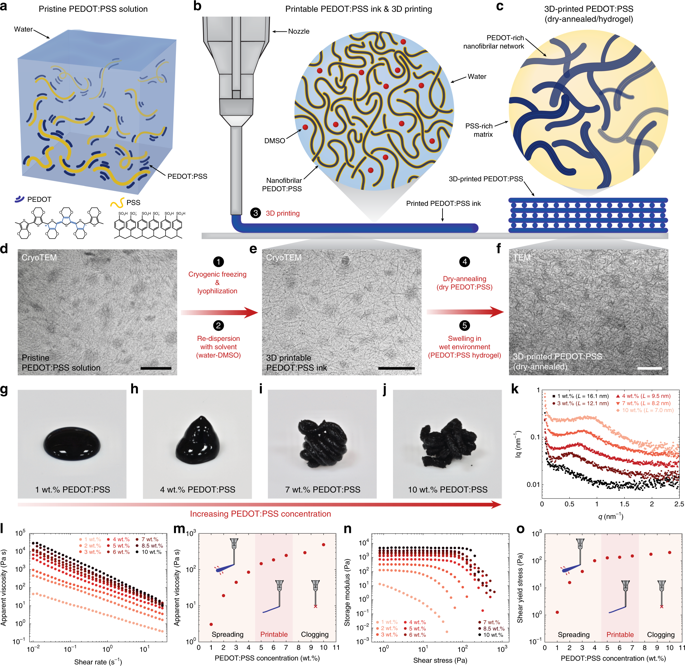Nature Communications ( IF 14.7 ) Pub Date : 2020-03-30 , DOI: 10.1038/s41467-020-15316-7 Hyunwoo Yuk 1 , Baoyang Lu 2, 3, 4 , Shen Lin 5 , Kai Qu 3 , Jingkun Xu 2, 3 , Jianhong Luo 5 , Xuanhe Zhao 1, 4

|
Conducting polymers are promising material candidates in diverse applications including energy storage, flexible electronics, and bioelectronics. However, the fabrication of conducting polymers has mostly relied on conventional approaches such as ink-jet printing, screen printing, and electron-beam lithography, whose limitations have hampered rapid innovations and broad applications of conducting polymers. Here we introduce a high-performance 3D printable conducting polymer ink based on poly(3,4-ethylenedioxythiophene):polystyrene sulfonate (PEDOT:PSS) for 3D printing of conducting polymers. The resultant superior printability enables facile fabrication of conducting polymers into high resolution and high aspect ratio microstructures, which can be integrated with other materials such as insulating elastomers via multi-material 3D printing. The 3D-printed conducting polymers can also be converted into highly conductive and soft hydrogel microstructures. We further demonstrate fast and streamlined fabrications of various conducting polymer devices, such as a soft neural probe capable of in vivo single-unit recording.
中文翻译:

导电聚合物的 3D 打印。
导电聚合物是能源存储、柔性电子和生物电子等多种应用中很有前途的候选材料。然而,导电聚合物的制造主要依赖于喷墨印刷、丝网印刷和电子束光刻等传统方法,其局限性阻碍了导电聚合物的快速创新和广泛应用。在这里,我们介绍一种基于聚(3,4-乙撑二氧噻吩):聚苯乙烯磺酸盐(PEDOT:PSS)的高性能可3D打印导电聚合物墨水,用于导电聚合物的3D打印。由此产生的卓越的可印刷性使得导电聚合物能够轻松地制造成高分辨率和高纵横比的微结构,并且可以通过多材料3D打印与绝缘弹性体等其他材料集成。 3D打印的导电聚合物还可以转化为高导电性和柔软的水凝胶微结构。我们进一步展示了各种导电聚合物设备的快速和简化的制造,例如能够进行体内单单元记录的软神经探针。





















































 京公网安备 11010802027423号
京公网安备 11010802027423号